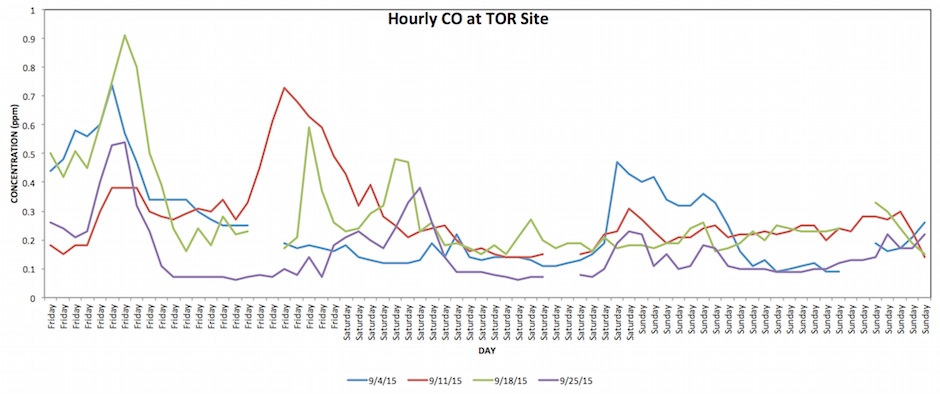You Didn’t Imagine It: The Air Was Cleaner During the Pope’s Visit
Remember that time that Pope Francis came to Philadelphia for a weekend, and people took back the streets from cars, regularly broke out into song, and were a little nicer to each other? Jesus, what they say about millennials having early-onset nostalgia must be true, because it’s been two weeks since the pope was here and I’m already pining for him to come back.
Anyway, some residents said that yet another upside of the weekend was that the air felt a little fresher. But was it actually cleaner? The papal visit certainly presented a unique opportunity to conduct an experiment to see how quickly — and to what extent — the air quality changes when you take cars off the streets. For the mega-event, officials closed down several major roads and highways in Philadelphia, and barred incoming traffic from parts of Center City.
The city’s Department of Public Health regularly measures the amount of pollutants in the air at various sites in Philadelphia. Compared to similar weekends, the health department’s Alison Riley told us that there were indeed lower levels of some pollutants during the pope’s visit, particularly on that Saturday.
Riley and her team in Air Management Services compared the quality of the air from 9 a.m. to 9 p.m. on September 25th, 26th and 27th to the other weekends last month, using something called the “one-hour standard,” which measures the maximum level of a given pollutant during each hour.
They found that levels of nitrogen dioxide and carbon monoxide fell by 42 percent and 17 percent, respectively, on the Saturday that Frank was here. Both pollutants are emitted by cars and trucks.
Factors unrelated to automobiles, such as the temperature, can impact air pollution, too. We asked Riley if the health department could say for certain if this boost in air quality was due to the dearth of cars on the streets.
“It appears that way,” she said. “We think it’s likely that the absence of cars contributed to lower pollution levels for certain pollutants.”
Over in Paris, residents were celebrating their first “day without cars” on September 27th. The air quality improved there, too, CityLab reported:
The single-day initiative made 30 percent of the city’s roads off-limits to automobiles, but even that minor reduction in traffic was enough to cut pollution levels — and noise — significantly.
The Guardian reports that according to Airparif, which measures city pollution levels, some parts of Paris registered 40 percent less nitrogen dioxide (which produces smog) in the air on September 27. On the bustling Avenue des Champs-Élysées, nitrogen dioxide levels were 30 percent lower than on other Sundays. And Bruitparif, which measures urban noise, recorded half as much volume in the city center as normal.
Car-free weekends may soon become a regular event in Philadelphia. After the papal visit, the Open Streets PHL campaign called for another, smaller weekend with limited cars. Mayor Michael Nutter announced shortly thereafter that the administration is hoping to do an “open streets” redux this fall.
You can take a look at the health department’s findings below:



